Understanding the Urgency of Dental Emergencies
What Is a Dental Emergency?
A dental emergency involves sudden, severe issues affecting your teeth or gums that require immediate attention. These situations can cause intense pain, bleeding that won't stop, or risk losing a tooth.
Why Prompt Action Matters
Quick and effective initial care helps relieve pain, prevents further damage, and increases the chances of saving your natural teeth. For example, reinserting a knocked-out tooth within an hour can be crucial.
Common Dental Emergencies
- Knocked-out or dislodged teeth
- Severe toothaches
- Cracked or chipped teeth
- Lost fillings or crowns
- Soft tissue injuries with bleeding
- Dental abscesses or swelling
Taking swift action and seeking professional dental care can protect your oral health and reduce complications.
Dental Emergency Key Facts
- Always handle a knocked-out adult tooth by the crown to protect the root and cells.
- Gently rinse the knocked-out tooth under running water or with milk to remove dirt without damaging the root.
- Immediate reimplantation of the tooth within one hour greatly increases the chance of saving the tooth.
- For severe toothaches, rinsing with warm salt water can temporarily reduce inflammation and soothe pain.
- Keep broken crowns or veneers safe and use temporary cement to protect teeth until professional repair.
- Control bleeding from soft tissue injuries by applying gentle pressure with gauze and cold compress for swelling.
- Gently stabilize loose teeth by positioning against adjacent teeth and seek urgent dental evaluation.
- Manage pain and swelling by applying cold compresses, and watch for signs of infection requiring professional care.
- Promptly contact local emergency or dental clinics for after-hours support to prevent complications.
- Community-oriented clinics offer preventive, restorative, cosmetic, pediatric, and emergency dental services for comprehensive care.
1. Step 1: Safely Handle and Preserve a Knocked-Out Tooth
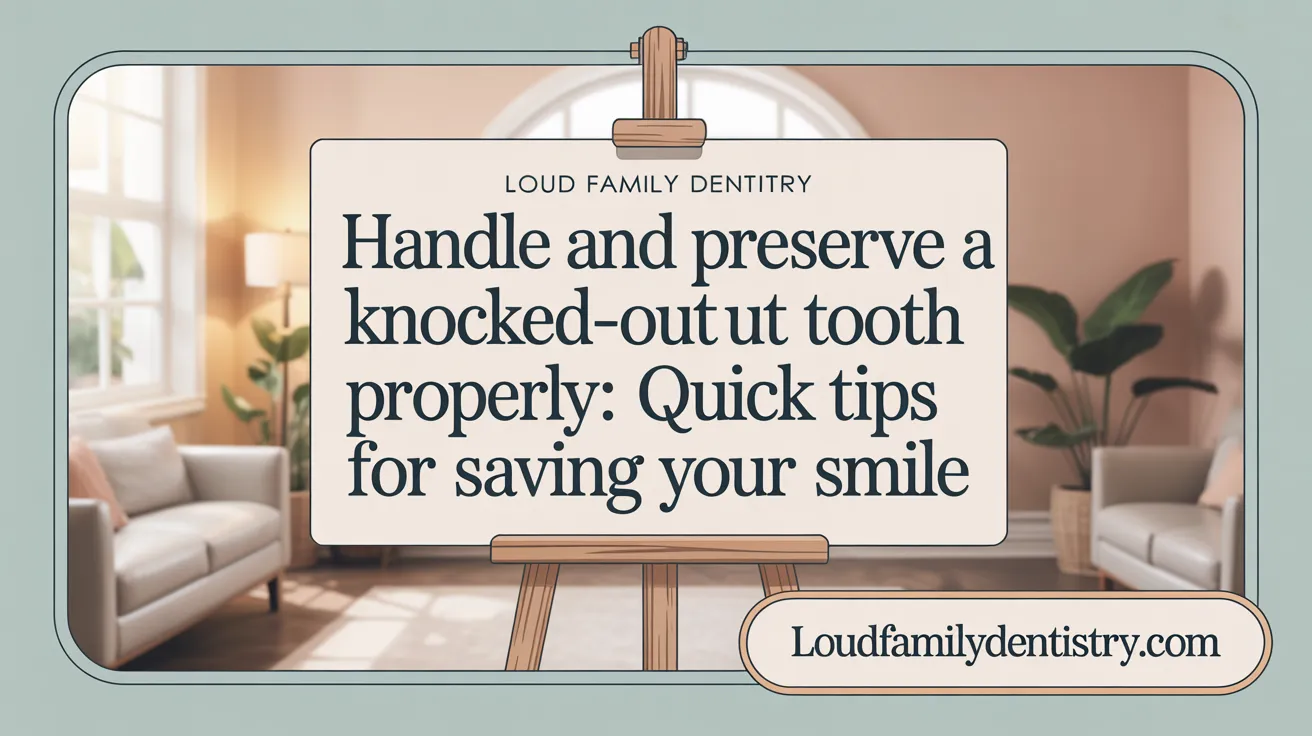
How to handle a knocked-out tooth carefully by the crown
When dealing with a Knocked-out adult tooth care, it’s crucial to pick it up by the crown—the part visible in the mouth—to protect the delicate root and cells needed for reattachment.
Rinsing and cleaning the tooth
Rinsing a knocked-out tooth gently under running water or with milk to remove any dirt is important. Avoid scrubbing or using soap, which can damage the tooth's root.
Reinserting the tooth into the socket
If you can, immediately try Reinserting a knocked-out tooth. This step greatly improves the chances of saving the tooth.
Using milk or preservation solutions if reinsertion is not possible
If reinserting the tooth isn’t possible, keep it moist by placing it in a container with Preserving a knocked-out tooth in milk. This helps preserve the cells until you get to a dentist.
Time sensitivity for reinsertion
Time matters a lot. Ideally, the tooth should be reinserted within one hour of the injury to maximize survival chances, as emphasized in Essential steps for dental emergencies.
Proper and prompt handling of a knocked-out tooth can make the difference between saving and losing the tooth, so act quickly and carefully before seeking Emergency Dental Care.
2. Step 2: Manage Severe Toothache with Safe Home Remedies

How can one temporarily manage a severe toothache at home?
A reliable way to ease the discomfort of a severe toothache temporarily is by rinsing your mouth gently with warm salt water. This simple home remedy helps reduce inflammation and can soothe the painful area.
Using warm salt water rinses to relieve pain
Warm salt water works by cleansing the mouth and creating a less hospitable environment for bacteria that might be causing irritation. It is easy to prepare and can be done several times a day to provide relief until you get professional care. For more information, see Using Salt Water Rinses for Abscessed Tooth.
Avoiding self-medication with sharp instruments
It’s important not to poke or probe around the tooth causing pain with sharp objects. Such actions can worsen the condition or cause further injury to the gums and surrounding tissues. Refer to Safe removal of objects stuck in mouth for safe practices.
When to seek prompt dental care for toothaches
If the toothache persists, increases in intensity, or is accompanied by swelling, fever, or a bad taste in the mouth, these signs may indicate an abscess or infection. In such cases, it is critical to contact your dentist promptly to prevent complications.
Recognizing signs that indicate underlying problems like abscess or infection
Persistent pain, swelling, redness, and difficulty opening the mouth are symptoms pointing toward infections that require urgent professional care. Early treatment helps avoid more serious issues, including tooth loss or spreading infection. Learn more about When to Seek Urgent Dental Care.
Following these safe home care steps can help manage a severe toothache temporarily, but they are not substitutes for professional dental treatment.
3. Step 3: Protect and Preserve Broken Crowns or Veneers

What should be done if a crown or veneer breaks?
If you experience broken crowns and veneers management, it is important to keep all the broken pieces safe and bring them with you when you visit the dentist. This helps the dental professional assess the damage and decide on the best course of treatment.
Until you can see your dentist, applying using temporary dental cement for crowns to the exposed area can protect the underlying tooth from sensitivity and further injury. Temporary cement is available over-the-counter and acts as a protective barrier.
Avoid chewing or putting any pressure on the damaged tooth to prevent worsening the break or causing pain. Eating on the opposite side of your mouth and sticking to soft foods can help manage discomfort and shield the affected tooth.
By following these steps, you help maintain the integrity of your dental restoration and improve the chances of successful repair or replacement during your dental visit.
4. Step 4: Control Bleeding and Injury to Soft Tissues
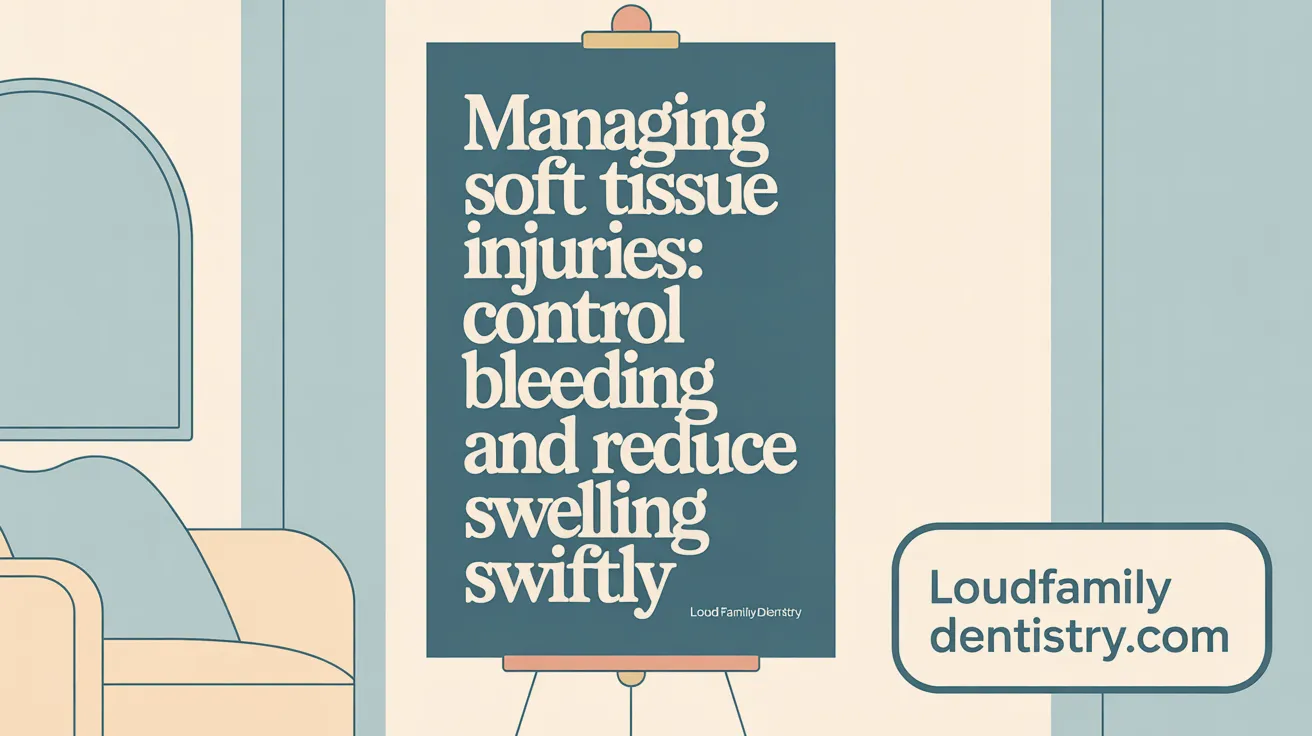
How should injuries to the gums, cheeks, or tongue be managed?
If you experience injuries to soft tissues such as the gums, cheeks, or tongue, start by rinsing mouth with warm salt water gently with water to clear away any debris. This helps prevent infection and prepares the area for further care.
Next, use a clean cloth or gauze to apply firm but gentle pressure directly to the bleeding site to help stop or reduce bleeding. Maintaining this pressure for several minutes is important (Controlling bleeding in dental injuries).
To ease pain and reduce swelling, apply a cold compress externally to the affected area. This approach offers temporary relief for toothache and minimizes inflammation.
However, if the bleeding persists despite pressure, or if the injury is deep or severe, it's crucial to seek immediate professional dental care. Persistent bleeding and extensive soft tissue damage require prompt attention to avoid complications such as infection or prolonged healing.
Remember, managing soft tissue injuries properly at home while promptly contacting your dentist or emergency services ensures the best outcome in a dental emergency.
5. Step 5: Stabilize Loose or Dislodged Teeth Safely
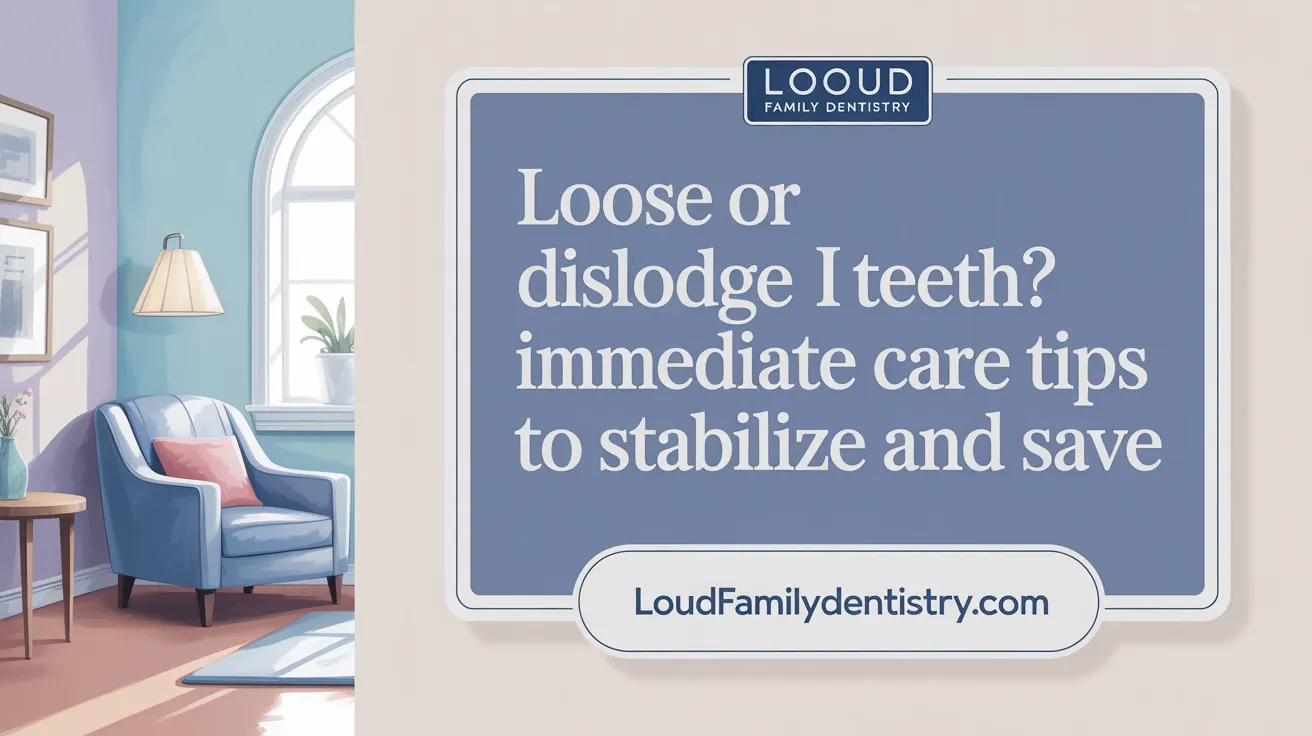
What is the recommended immediate care for a loose or dislodged tooth?
When dealing with a loose or dislodged tooth, it is crucial to avoid unnecessary movement. Excessive handling can worsen the damage, causing more trauma to the tooth and surrounding tissues.
If possible, gently stabilize the tooth by positioning it against adjacent teeth. This should be done carefully without applying direct pressure, which might cause additional injury.
Temporary measures, such as using a clean piece of gauze or gentle finger support, can help hold the tooth steady during transit to the dental office.
Seeking prompt evaluation by a dental professional is essential to prevent complications such as infection, increased mobility, or tooth loss. Delaying care risks further damage and could reduce the chances of saving the affected tooth. For urgent dental assessment, refer to Emergency Dental Care services.
In summary, minimizing movement and securing the tooth in place, followed by urgent dental assessment, provide the best outcomes for a loose or dislodged tooth.
6. Step 6: Manage Pain, Swelling, and Infection with Safe Measures
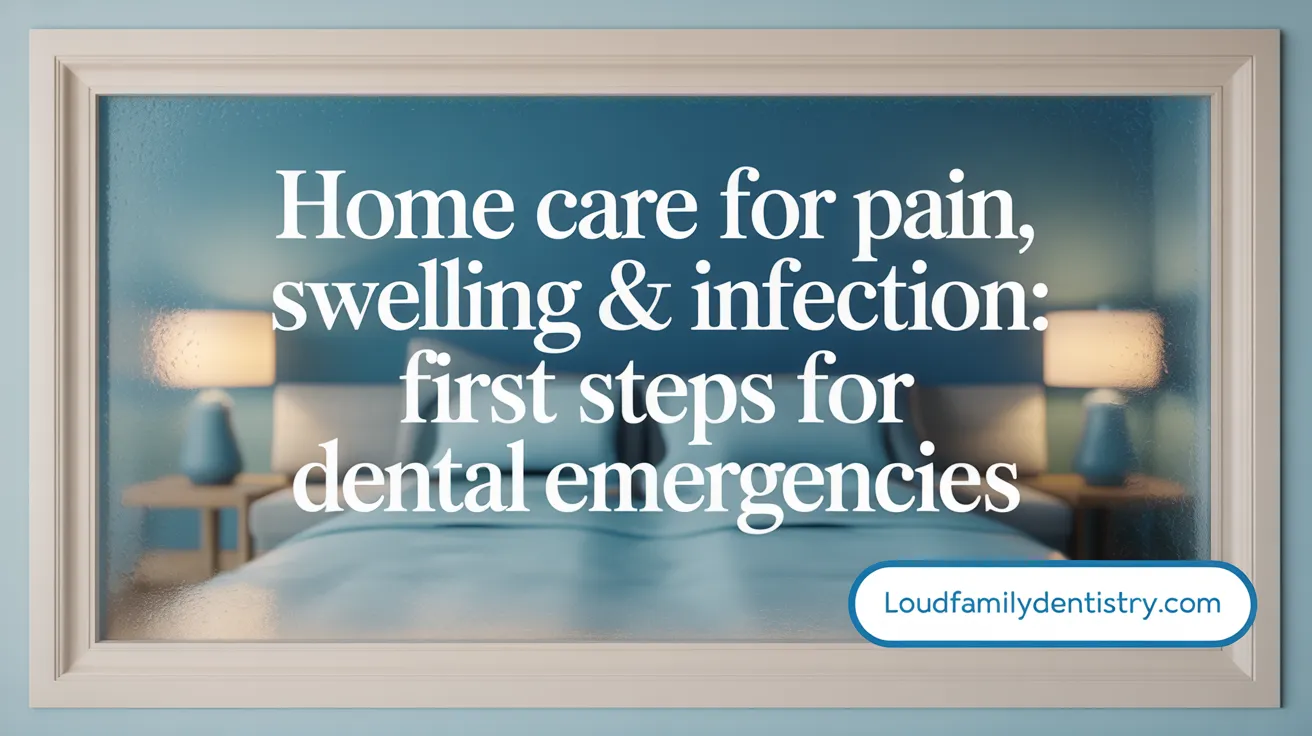
How can pain and swelling from a dental emergency be safely managed at home?
When faced with a dental emergency, managing pain and swelling quickly and safely is crucial to comfort and preventing further issues. One effective method is applying a cold compress to the affected area. Use the compress in intervals — typically 15 minutes on, 15 minutes off — to reduce swelling and numb the pain without causing skin damage.
It is important to avoid heat or direct pressure on the injured site, as heat can increase inflammation and worsen discomfort. Cold compresses help to constrict blood vessels, slowing swelling and calming pain. For more information on managing dental pain and swelling, refer to guidance on Emergency Dental Care.
Watch closely for signs of infection such as pus, severe or increasing swelling, and fever. These symptoms indicate that an infection may be developing and require prompt professional dental or medical care. Early intervention for infections, including abscesses, is vital to avoid complications and ensure proper healing. Learn about when to seek emergency dental care and how to access Emergency Dental Services for urgent treatment.
In summary, cold compresses are a safe, effective first step in managing dental pain and swelling at home, but any indication of infection should be addressed by a dental professional immediately. For expert help with emergency dental care, contact your local emergency dentist or dental clinic without delay.
7. Step 7: Seek Immediate Professional Care and Follow-Up
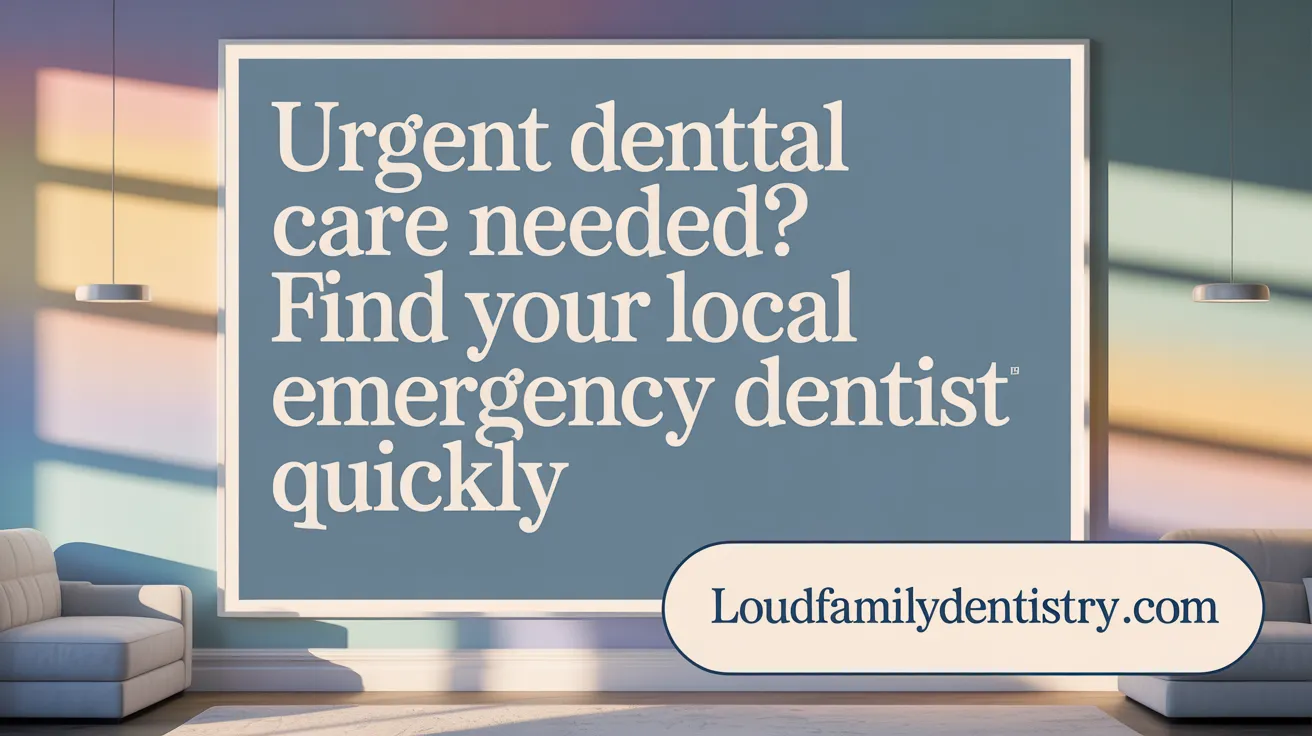
Contacting a Trusted Local Dental Clinic or Emergency Room
In the event of a dental emergency in Shreveport, reaching out promptly to a trusted local dental clinic or emergency room is essential. Clinics like Smile Dental Center Shreveport and Dr. Chris Mott’s practice in Shreveport offer same-day dental appointments and 24/7 emergency call support to manage urgent dental issues effectively.
Importance of Timely Treatment to Prevent Complications
Quick professional treatment is crucial to avoid complications such as infections, worsening pain, tooth loss, or spread of damage. Immediate care helps save natural teeth and prevents further oral health problems, as explained in essential steps for dental emergencies and the importance of prompt dental emergency treatment.
Making Use of After-Hours Emergency Dental Services
Many dental clinics now provide after-hours emergency dental services, including weekends or phone triage, ensuring you receive care when you need it most. These services bridge the gap outside regular office hours and offer effective pain management and emergency stabilization, as detailed in emergency dental services and urgent dental care.
Maintaining Access to Community-Oriented Dental Clinics for Ongoing Care
Establishing a relationship with community-oriented dental clinics is beneficial for comprehensive follow-up and continuity of care. These clinics emphasize patient comfort and professional emergency dental care, and are well-equipped to support long-term oral health after an emergency.
Why is prompt professional dental care critical after initial emergency steps?
Timely professional intervention prevents worsening of injury or infection, helps save natural teeth, and addresses pain effectively. Utilizing after-hours emergency dental services ensures care is received quickly. Community-oriented dental clinics provide comprehensive follow-up and continuity of care, supporting overall oral health.
Comprehensive Dental Services Offered by Community-Oriented Clinics
What comprehensive dental services are typically offered by community-oriented dental clinics?
Community-oriented dental clinics provide a wide range of services to meet the oral health needs of diverse patient populations, catering to all ages. These services commonly include:
- Preventive Care: Routine exams, cleanings, fluoride treatments, and sealants to maintain healthy teeth and prevent decay.
- Restorative Treatments: Fillings, root canals, crowns, and gum disease management to repair and preserve damaged teeth.
- Cosmetic Procedures: Teeth whitening, veneers, and dental implants designed to improve the appearance and function of teeth.
- Pediatric Dentistry: Specialized care tailored for children's unique dental needs.
- Emergency Dental Care: Immediate treatment for urgent issues such as knocked-out teeth, severe toothaches, broken restorations, and soft tissue injuries.
Many community-oriented dental clinics employ advanced dental technology to enhance diagnostics and treatment comfort, while also ensuring accessibility through convenient locations and flexible scheduling. They often engage in outreach and programs that support low-income and vulnerable individuals, reinforcing their commitment to comprehensive, compassionate, community-focused oral healthcare.
Be Prepared and Act Swiftly to Protect Your Dental Health
Essential Steps in Dental Emergencies
When facing a dental emergency, it’s important to stay calm and act quickly. For knocked-out teeth, hold the tooth by the crown, rinse it gently, and try to reinsert it into the socket. If reimplantation isn’t possible, keep the tooth moist in milk or a special preservation solution.
Severe toothaches can be temporarily eased by rinsing with warm salt water, while broken crowns or veneers should be saved and protected with temporary dental cement until you see a dentist. For injuries to the gums or other soft tissues, rinse gently with water and apply pressure to control bleeding. Persistent bleeding requires immediate professional care.
Importance of Prompt Professional Care
Seeking right away care from dental professionals like Loud Family Dental or other local clinics ensures quick relief from pain and prevents complications such as infection or tooth loss. Many emergency dental offices offer after-hours availability to help when you need it most.
Empower Yourself in Emergencies
Knowing these steps empowers you to confidently handle unexpected dental injuries or pain until you can see a dentist. Quick, calm action combined with professional treatment is the best way to protect your smile and oral health.
